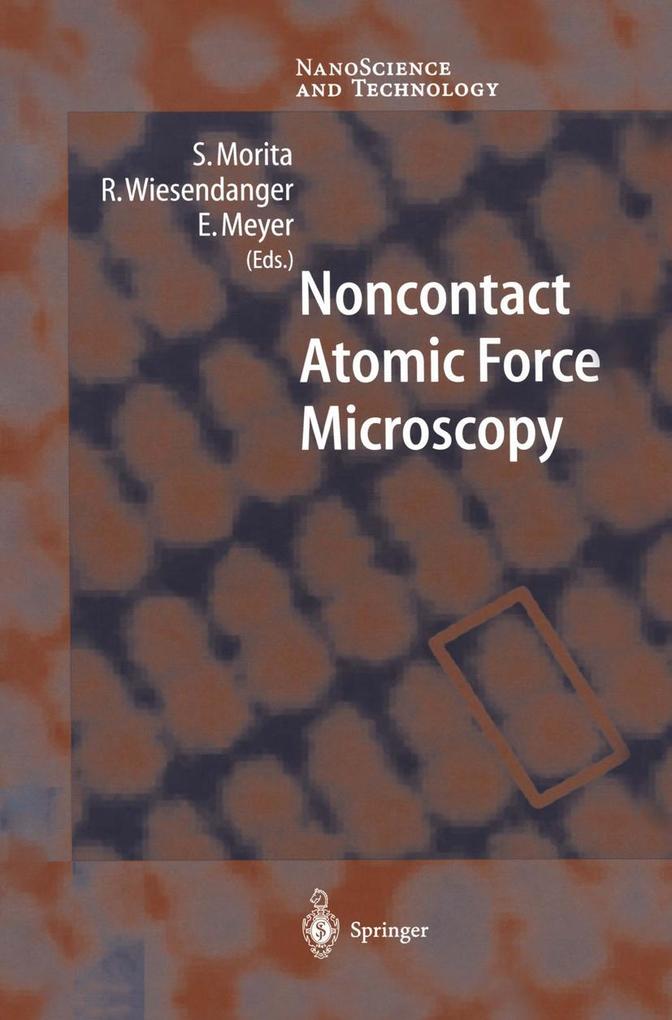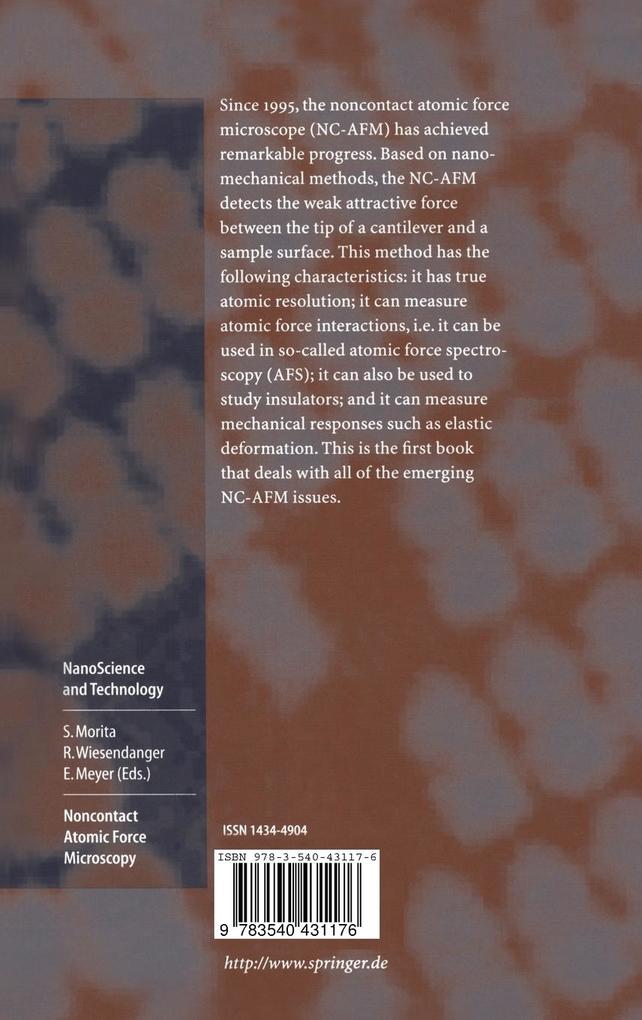Since 1995, the noncontact atomic force microscope (NC-AFM) has achieved remarkable progress. Based on nanomechanical methods, the NC-AFM detects the weak attractive force between the tip of a cantilever and a sample surface. This method has the following characteristics: it has true atomic resolution; it can measure atomic force interactions, i. e. it can be used in so-called atomic force spectroscopy (AFS); it can also be used to study insulators; and it can measure mechanical responses such as elastic deformation. This is the first book that deals with all of the emerging NC-AFM issues.
Inhaltsverzeichnis
Introduction. - Principles of NC-AFM. - Semiconductor Surfaces. - Bias Dependence of NC-AFM Images and Tunneling Current Variations on Semiconductors. - Alkali Halides. - Atomic Resolution Imaging on Fluorides. - Atomically Resolved Imaging of a NiO(001) Surface. - Atomic Structure, Order and Disorder of High-Temperature Reconstructed alpha-Al2O3(0001). - NC-AFM Imaging of Surface Reconstructions and Metal Growth on Oxides. - Atoms and Molecules on TiO2(110) and CeO2(111) Surfaces-. NC-AFM Imaging of Adsorbed Molecules. - Organic Molecular Films. - Single-Molecule Analysis. - Low-Temperature Measurements: Principles, Instrumentation, and Application. - Theory of NC-AFM. - Chemical Interaction in NC-AFM on Semiconductor Surfaces. - Contrast Mechanisms on Insulating Surfaces. - Analysis of Microscopy and Spectroscopy Experiments. - Theory of Energy Dissipation into Surface Vibrations. - Measurement of Dissipation Induced by Tip-Sample Interactions.











